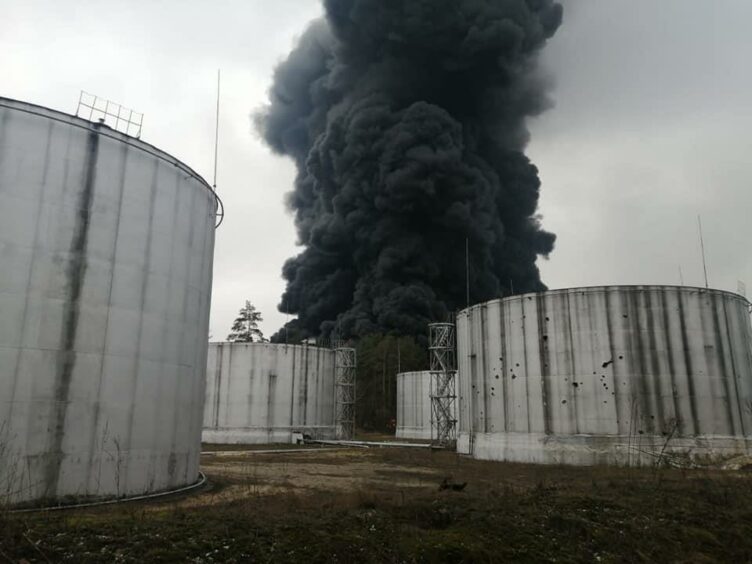
Oil headed for the biggest weekly surge in almost two years after Russia’s invasion of Ukraine roiled global markets and fueled fears of a supply crunch, driving prices to their highest since 2008.
Futures in New York resumed gains after swinging through a $10 range and closing below $108 a barrel Thursday on signs that an Iranian nuclear deal may be near. Ukrainian officials said Russian forces attacked a nuclear plant early Friday – Europe’s biggest – which led to a spike in oil and other commodities before prices pulled back slightly. Crude is up 20% this week.
The International Energy Agency warned that global energy security was under threat and a planned release of emergency oil reserves by the US and other major economies failed to quell supply concerns. JPMorgan Chase & Co. said global benchmark Brent crude could end the year at $185 a barrel if Russian supply continues to be disrupted. It was just shy of $120 on Thursday.
The invasion has reverberated throughout the energy sector. Global oil majors including BP, Shell and Exxon Mobil are exiting Russia, buyers of its crude are seeking alternatives and shipping costs are spiking. Russia’s Lukoil PJSC has called for a “fast resolution of the military conflict.”
While official sanctions haven’t been imposed on Russian energy exports, buyers are shunning the nation’s crude as they navigate financial penalties. Germany and the White House oppose a ban on Russian oil imports, though US lawmaker support to prohibit shipments into America is growing.
“The threat to global oil security and a supply squeeze is real,” said Jeffrey Halley, senior market analyst at Oanda Asia Pacific Pte. “An Iran nuclear deal will not replace lost Russian production on international markets and will only give temporary solace to oil prices.”
Prices
- West Texas Intermediate for April delivery rose 2.4% to $110.27 a barrel on the New York Mercantile Exchange at 5:30 a.m. in London after losing 2.7% on Thursday.
- Brent for May settlement gained 2.2% to $112.83 a barrel on the ICE Futures Europe exchange. Futures are up 15% this week.
The head of the world’s atomic watchdog said his trip on Saturday to Tehran could “pave the way” to reviving the Iran nuclear deal, a pact that would see the return of official oil exports. The OPEC producer has millions of barrels of oil stored offshore that could flow quickly into a tight market.
Brent remains in deep backwardation, a bullish structure where prompt barrels are more expensive than later-dated cargoes, signaling a tight supply-demand balance. The benchmark’s prompt spread was $3.96 a barrel after touching record levels in recent days.
Against this backdrop, OPEC+ stuck with its gradual scheduled increase of supply in April during its monthly meeting on Wednesday, wrapping up the gathering in record time without discussing the invasion of Ukraine. Russia is one of the key leaders of the cartel along with Saudi Arabia. IEA Executive Director Fatih Birol said the outcome of the meeting was “disappointing.”